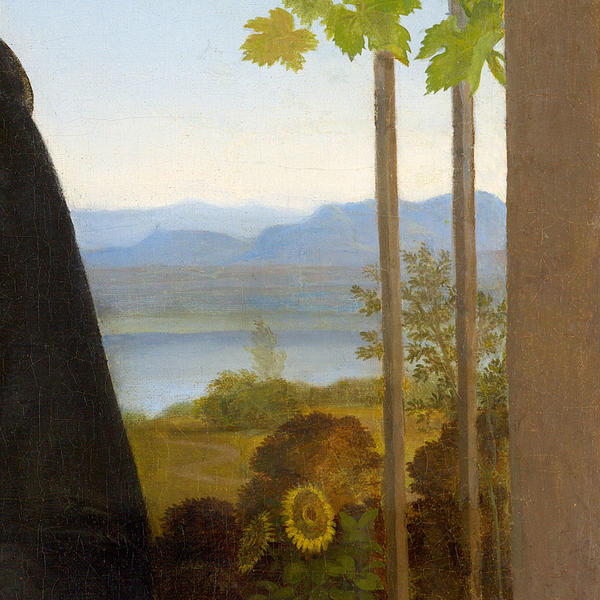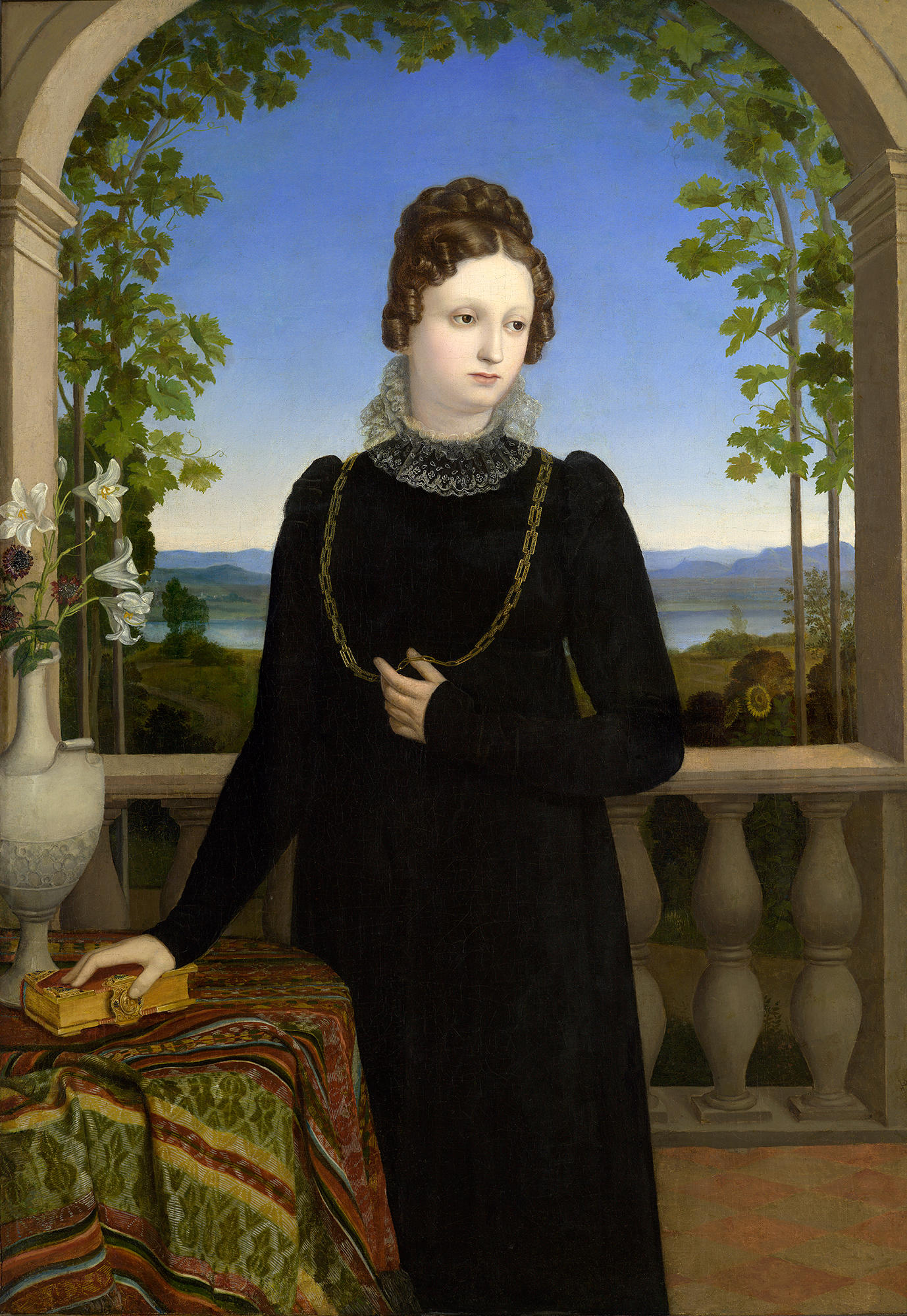The Portrait of Woman
Creation period
1821-1825
Dimensions
124,5x85,2 cm
124,5 х 85,2 cm
124,5 х 85,2 cm
Technique
oil on canvas
Collection
Exhibition
13
Open in app#2

Philipp Veit
The Portrait of Woman
#3
#12

#4
Philipp Veit belonged to the Nazarene group, which declared a return to the roots – early Renaissance art. Their inspirational figures were Dürer, young Rafael, Perugino, and other Trecento and Quattrocento artists. The arc framing ‘The Portrait of Woman’ is a reference not to specific older pieces of art, but to the typology of medieval and Renaissance altar polyptychs, where many panels had similar semicircular frames.
#10
The group’s official name was the Saint Luca Brotherhood in honor of the patron saint of artists. It received the nickname “Nazarenes” when its members lived and worked in an abandoned Roman monastery of Sant Isidor. According to one version, it came from allanazarena – the traditional name of a long hairstyle, well-known from Dürer’s self-portraits and worn by many Nazarenes.
#13
Grapes
#7

#14
The symbol of grapes was used in many paintings and Renaissance altar pieces, such as ‘Madonna and Child’ (‘Madonna with Grapes’) by Lucas Cranach the Elder. We can see it in the portrait of Pforr made by Overbeck, along with other symbols and attributes used in the best traditions of German and Flemish Renaissance art to reveal the personality of a model. A classic example is the ‘Arnolfini Portrait’ by van Eyck, where nothing simple can be found — in other words, no accidental, non-symbolic objects are present.
#15
The landscape background
#16

#17
The landscape background in painting was first introduced by Giotto. It then became common for Renaissance portraits and heavily peopled religious and mythological compositions. This way, their characters lived not in a void of space, but in the real world, easily recognizable by the public and customers.
#18
The woman’s face
#19

#20
The model in this painting has an obvious similarity to the Virgin Mary: though she was a real girl, her image was interpreted idealistically, and a set of ‘proper’ features and attributes was added to it. It is known that the organizer and one of the major theoreticians of the Nazarenes, Friedrich Overbeck, almost never painted anything from nature. The artist preferred to work in a monastery cell, so he projected not a real human portrait, but an abstract, ideal image on his canvas.
read morehide
00:00
00:00
1x
The Portrait of Woman
Creation period
1821-1825
Dimensions
124,5x85,2 cm
124,5 х 85,2 cm
124,5 х 85,2 cm
Technique
oil on canvas
Collection
Exhibition
13
Open in app
Share


